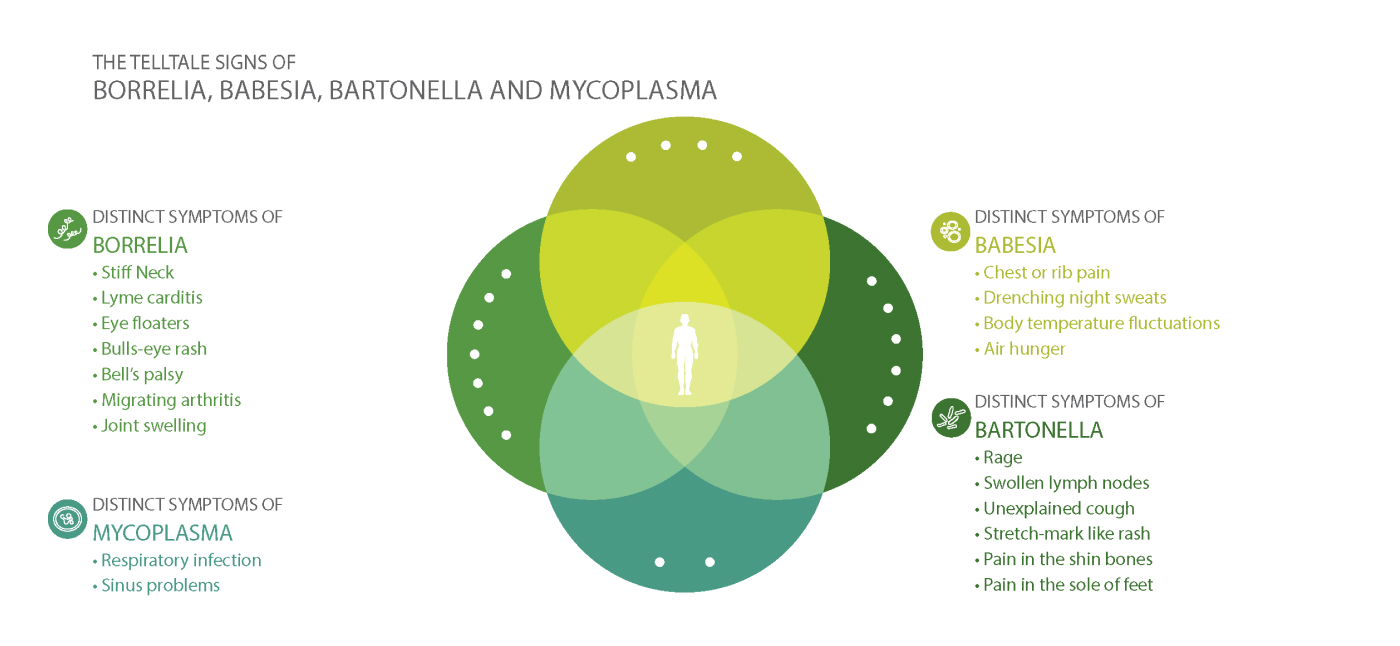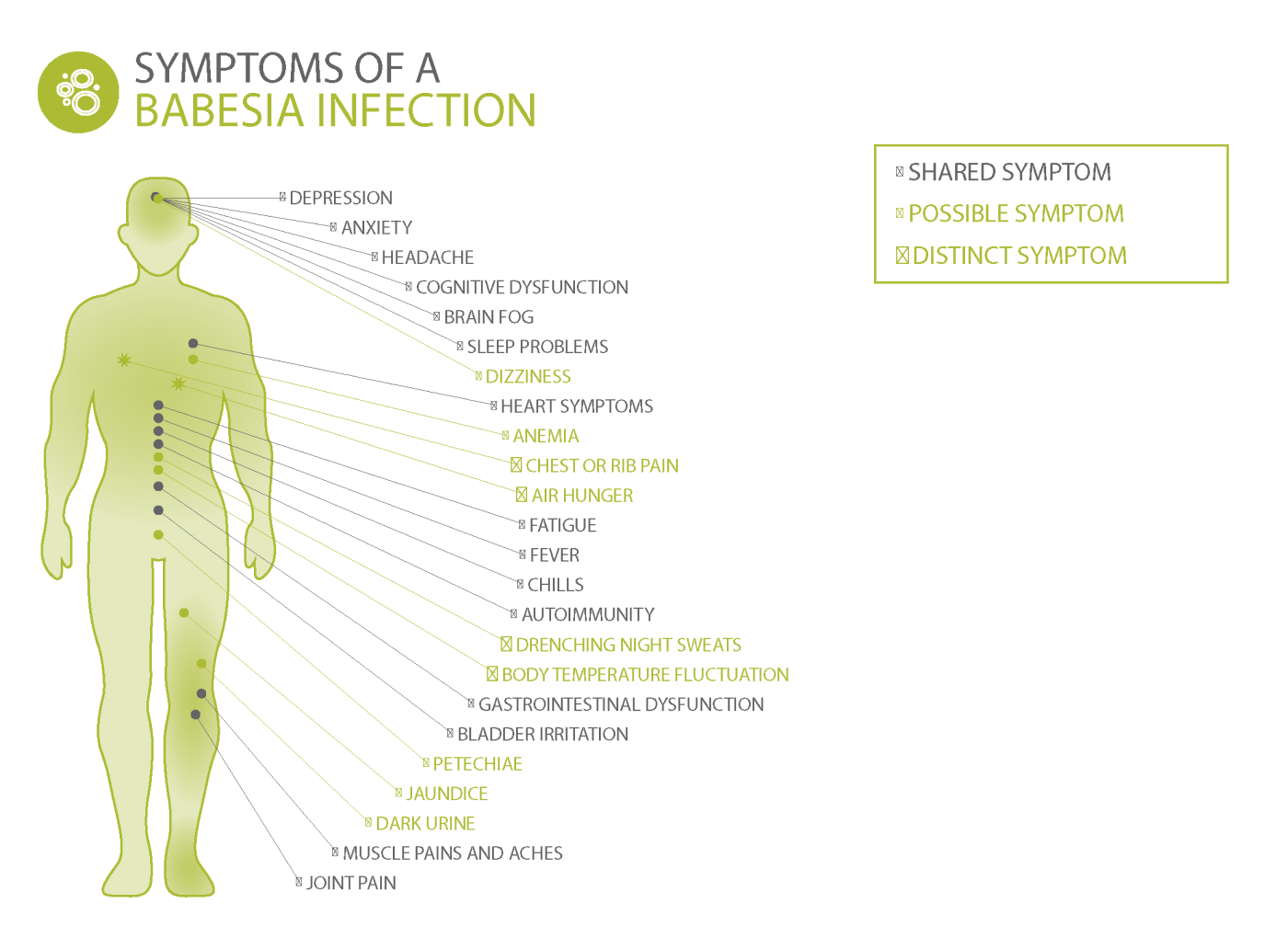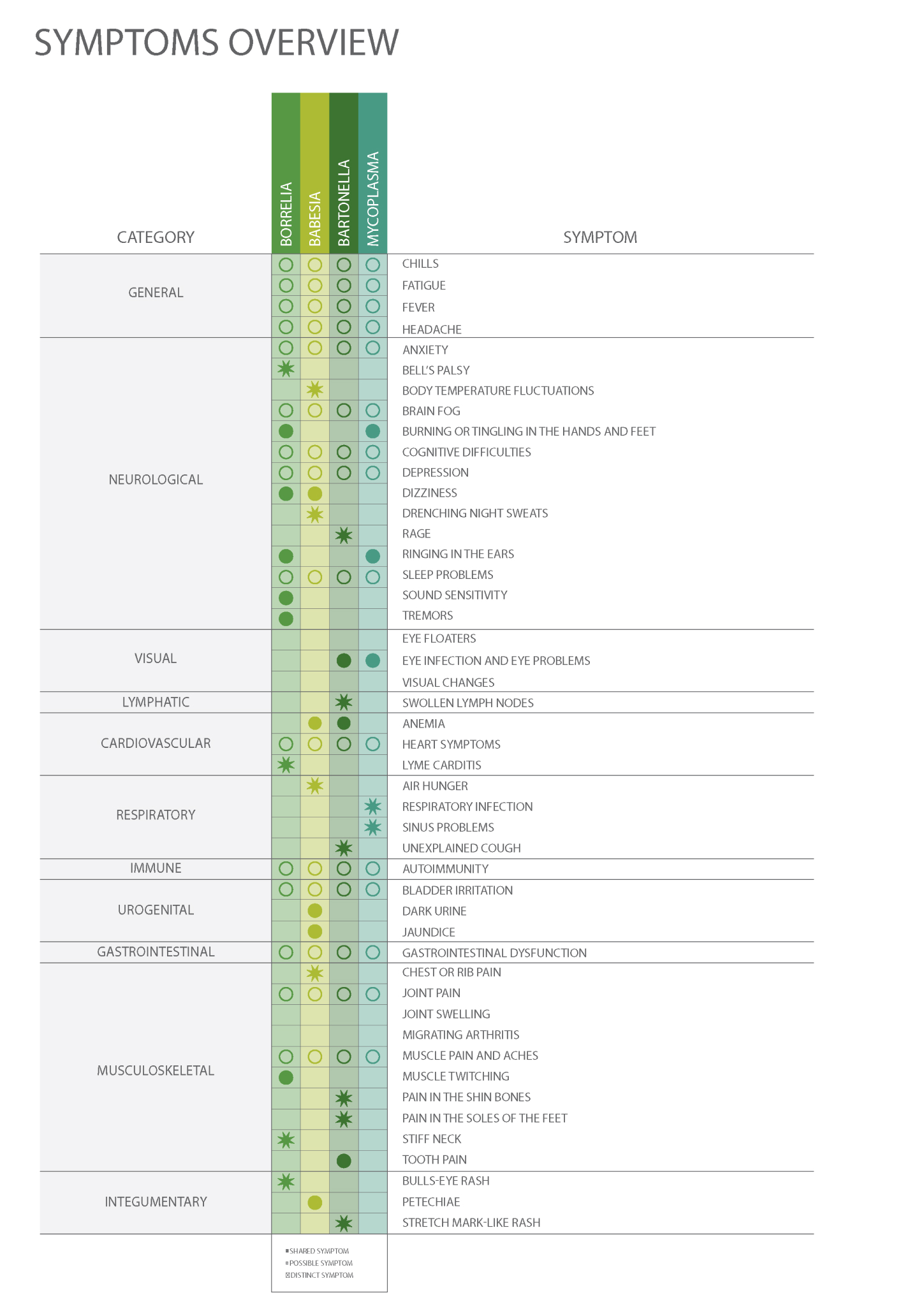The classic symptoms of Lyme disease
Symptoms of Lyme disease vary greatly depending on a number of factors. First, they will differ according to the stage of infection. The disease has three main stages:
Here is a partial list of symptoms that may appear in the acute phase of infection
The following is a chart for each system, including an extensive list of possible symptoms in the disseminated phase of the disease:
Head, face and neck
Eyes and vision
Ears and hearing
Digestive and excretory system
Musculoskeletal system
Respiratory and circulatory systems
Neurological system
General well-being
Psychological well-being
Cognitive skills
Reproduction and sexuality
Co-infections
In addition to the Borrelia burgdorferi bacterium, ticks often carry other pathogens. Symptoms and clinical manifestations of each of these infections can either resemble or differ from those of Lyme disease, making diagnosis and treatment extremely difficult. In Quebec, babesia and anaplasma are the most common pathogens, but can also include bartonella, mycoplasma pneumonia and many others.
The following images show the different types of infection.
The telltale signs Borrelia, Babesia, Bartonella et Mycoplasma

Borrelia
Babesia
Bartonella
Mycoplasma

The shared symptoms
Mycoplasma symptoms


Bartonella symptoms
Borrelia symptoms


Babesia symptoms
Symptoms of co-infections overview

